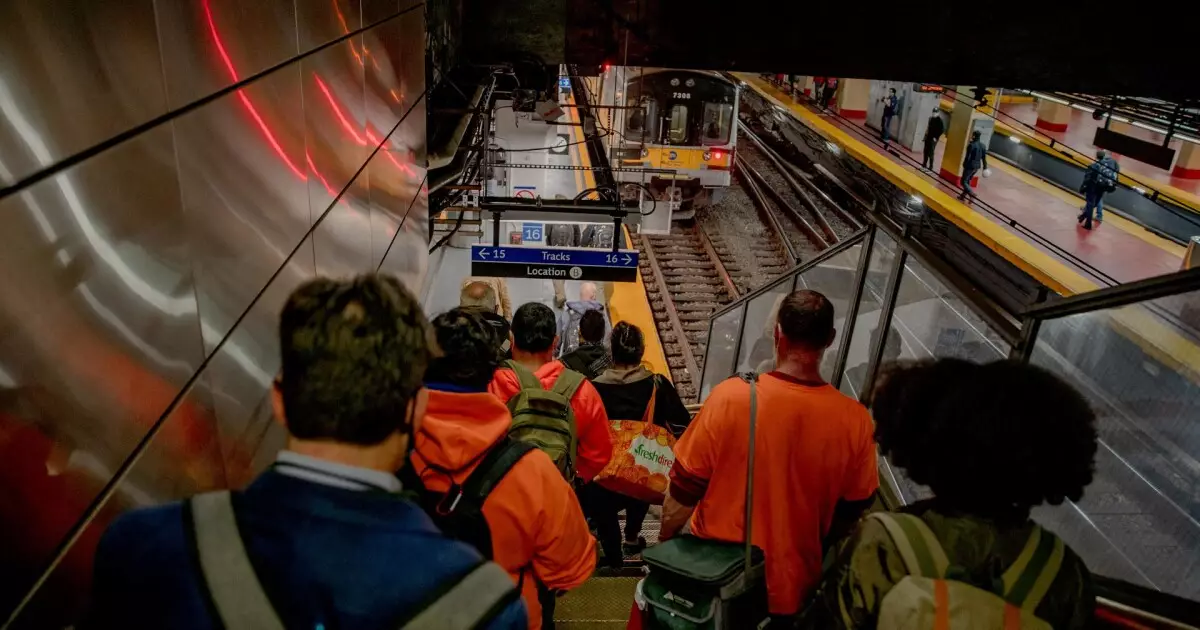In a surprising turn of events, the Trump administration has seized control of the $7 billion renovation of Pennsylvania Station, ousting the Metropolitan Transportation Authority (MTA) from its leading role. This decision, announced by U.S. Department of Transportation Secretary Sean Duffy, marks a major shift in oversight and raises numerous concerns regarding the groundwork laid for what should be a beneficial project for New Yorkers. Amtrak, the owner of the station, is now in charge, while the MTA—responsible for a system that serves millions—has been relegated to the sidelines. Such a drastic maneuver begs the question: is this the best path toward a modernized transit hub, or does it merely reflect the whims of political power plays?
Financial Decisions with Lasting Implications
Duffy’s declaration included slashing the federal grant for project development, a move that supposedly saves taxpayers $120 million. However, it’s essential to scrutinize where these savings truly lie. Are we trading long-term efficiency and infrastructure improvements for immediate budget relief? Governor Kathy Hochul has hailed this decision as a victory, but one must consider the hidden costs embedded in an initiative led by a federal entity notorious for its controversial decisions. The fundamental question arises: can a federal body like Amtrak handle the complexities and demands of such an enormous urban project effectively, or are we risking predictable pitfalls that may emerge from bureaucratic inexperience?
The Tug-of-War: State vs. Federal Interests
The announcement comes amid a tense relationship between the Trump administration and New York’s mass transit system. The MTA, currently embroiled in a legal battle over congestion pricing, has faced the threat of withheld federal funding unless it complies with Duffy’s demands for information regarding transit crime. This creates a precarious balance where a single entity could potentially leverage funding as a mechanism to influence state agency operations. Such an approach could lead to detrimental outcomes, undermining the collaborative efforts essential for any large infrastructure overhaul. When funding becomes a tool for political negotiation rather than a means to improve services, we risk sacrificing efficacy for compliance.
The Challenge of Managing Public Sentiment
When large projects are publicly funded, the burden of expectation lies heavily on the shoulders of the administrators. Hochul’s eagerness to commend the president and Secretary Duffy may reflect a calculated move to appease municipal constituents looking for improvement in their transit system. Yet the promised transformation of Penn Station—a facility instrumental for commuters—demands rigorous public dialogue and transparency. Enthusiastic yet uncritical support for the federal initiative could potentially create an environment where public input is sidelined, leading to a disconnected development process.
The Vision: Selling a Grand Dream
The proposed vision—transforming Penn Station into a 250,000 square-foot state-of-the-art complex, complete with amenities, retail space, and mixed-income housing—sounds grand and desirable on paper. However, these ambitious plans often come loaded with unsettling complications. Who decides the final design? How are community needs being represented amid high-level negotiations? Transformations often hang in the balance between high ideals and the practicalities of execution, with countless instances across the country showing us that plans can veer drastically off course.
Rethinking Infrastructure Funding
Secretary Duffy’s assertion, “the days of reckless spending and blank checks are over,” might resonate with many who have long decried government inefficiencies. Yet, one cannot help but feel that this statement is more a rhetoric-driven platitude than a genuine commitment to reform. While accountability is crucial, the notion that cavalier cuts to funding can ever genuinely replace comprehensive planning and thoughtful investment is a dangerous oversimplification. Infrastructure should not be viewed merely through a financial lens; it demands insight, vision, and collaborative governance.
A Moment of Reckoning for NYC Transit
The reshuffling of leadership in this crucial infrastructure project isn’t just a local issue; it symbolizes the shifting dynamics of federalism in America. As New Yorkers await the promise of a revitalized Penn Station, they must ponder the long-term ramifications of this administrative rearrangement. The question looms larger: will this fresh leadership yield genuine improvements, or are we facing yet another chapter of inefficiency masked as change? As we stand at this crossroads, the future of New York’s transit rests precariously on the decisions of leaders who may or may not reflect the needs of the very citizens they aim to serve.

